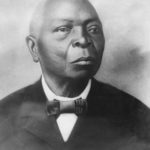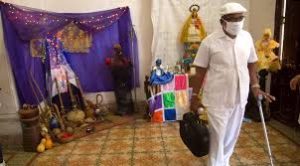ABREN RELIGIOSOS YORUBAS EN CUBA LAS CEREMONIAS PARA CULMINAR CON “LA LETRA DEL AÑO 2023”.PHOTOS.
La Asociación Cultural Yoruba de Cuba dio a conocer la “Profecía de preapertura para la Letra del año 2023”, que marca la antesala de “La Letra del Año”, que los cubanos esperan cada primero de enero.
La Letra del Año es la ceremonia más importante de la Regla Osha Ifá. Se trata de una predicción que se realiza con un complejo sistema oracular y cuyo fin supremo es mantener o alcanzar la armonía y el equilibrio, desde lo individual hasta lo social.
El origen de esta práctica está en la Cultura Yoruba que nace en Nigeria. Llegó a Cuba con los esclavos y en la actualidad muchos religiosos, antropólogos e historiadores coinciden en que es la Isla el territorio que mejor conserva estas tradiciones.
Los religiosos cubanos no pretenden por ello imponer sus designios, sino conseguir cada vez mayor conciliación entre la comunidad yoruba del mundo. Desde el año 2016 vienen impulsando un proceso de unificación de criterios de distintas ramas o familias.
La Letra del Año es la reunión más importante que tienen los babalawos. Tras su consulta al Oráculo de Ifá, ofrecen orientaciones a sus devotos sobre cómo dirigirse en el nuevo período ante los posibles retos a los que se enfrentarán.
Esta ceremonia se realiza en Cuba, Nigeria y otros lugares del mundo, desde hace varios siglos. Puede darse en diferentes fechas según la rama religiosa de que se trate.
LA PRIMERA “LETRA DEL AÑO” EN CUBA…
El primer babalawo cubano que dio la Letra del Año fue Remigio Herrera Obara Meyi Adeshina que era de origen africano llegado a Cuba en 1830.
Adeshina foto en 1891.La Letra del Año se realiza en Cuba desde el siglo XIX.
El primer babalawo cubano que dio la Letra del Año fue Remigio Herrera Obara Meyi Adeshina, quien organizó la ceremonia apoyado en cinco de sus ahijados.
Adeshina era de marca étnica Oyo nigeriano llegando a Cuba en 1830, en un barco de esclavos que partio de Ouidah o Little Popo; y pasó a Matanzas y luego a La Habana, donde obtuvo su libertad y fundó el famoso Cabildo de la Virgen de Regla en el barrio de Regla.
No quedó documentada la fecha de la primera vez que se presentó la Letra del Año en la Isla alrededor del 1885, pero si se conocen muchos datos de Adeshina (Corona que hace fuego).
En el año 1902, Adeshina estaba muy débil y uno de sus ahijados dio continuidad a la tradición. Tata Gaytán asumió la responsabilidad de liderar la ceremonia de la Letra del Año, con el apoyo de ahijados y babalawos experimentados.
Adeshina muere en el año 1905 y su sucesor fue Bernardo Rojas quien, habiendo heredado las deidades mayores de su padrino, asume la dirección de la Letra del Año, tutelado por Tata Gaytán.
“LA LETRA DEL ANO” A PARTIR DE 1959…
Bernardo Rojas falleció en el año 1959 y su sucesor fue el Dr. José Herrera, quien también heredó las deidades de Adeshina, aunque compartió la responsabilidad de la Letra del Año, con Joaquín Salazar que era el Babalawo mayor y Oba de la rama.
Los Babalawos mayores mantuvieron viva la tradición, con la mayor discreción, privacidad e intimidad del humilde grupo religioso. En la actualidad participan de la ceremonia representantes de distintas ramas.
La Asociación Cultural Yoruba de Cuba através de “La Letra del Año” para el 2022 habia expresado “que la gente podría sufrir este año trastornos cardiovasculares o pulmonares, problemas en la piel o los huesos. En lo social, recomendaron a la gente mantener la higiene en los hogares y fomentar el uso de plantas medicinales, y a los gobiernos sugirieron favorecer la construcción de infraestructura, desde viviendas y hospitales hasta cementerios. Además, las personas deberían prestar atención a la formación de los hijos y evitar la violencia interpersonal, así como estar atentos a complots en los cuales “varias personas se unen para perjudicar a otra”, expresó el texto escrito de la Letra para este año 2022 que acaba.
YORUBAN RELIGIOUS IN CUBA OPENS THE CEREMONIES TO CULMINATE WITH “THE LETTER OF THE YEAR 2023”.PHOTOS.
The Yoruba Cultural Association of Cuba released the “Pre-opening Prophecy for the Letter of the Year 2023”, which marks the prelude to “The Letter of the Year”, which Cubans await every first of January.
The Letter of the Year is the most important ceremony of the Osha Ifá Rule. It is a prediction that is made with a complex oracular system and whose ultimate goal is to maintain or achieve harmony and balance, from the individual to the social.
The origin of this practice is in the Yoruba Culture that was born in Nigeria. It arrived in Cuba with the slaves and today many religious, anthropologists and historians agree that the Island is the territory that best preserves these traditions.
The Cuban religious do not intend for this reason to impose their designs, but rather to achieve greater and greater conciliation among the Yoruba community of the world. Since 2016 they have been promoting a process of unifying the criteria of different branches or families.
The Letter of the Year is the most important meeting that the Babalawos have. After consulting the Oracle of Ifá, they offer guidance to their devotees on how to address the new period in the face of the possible challenges they will face.
This ceremony has been performed in Cuba, Nigeria, and other parts of the world for several centuries. It can occur on different dates depending on the religious branch in question.
THE FIRST “LETTER OF THE YEAR” IN CUBA…
The first Cuban Babalawo who gave the Letter of the Year was Remigio Herrera Obara Meyi Adeshina who was of African origin and arrived in Cuba in 1830.
The Letter of the Year has been performed in Cuba since the 19th century.
The first Cuban Babalawo to give the Letter of the Year was Remigio Herrera Obara Meyi Adeshina, who organized the ceremony supported by five of his godchildren.
Adeshina was of ethnic Nigerian Oyo brand arriving in Cuba in 1830, on a slave ship that departed from Ouidah or Little Popo; he went to Matanzas and then to Havana, where he obtained his freedom and founded the famous Cabildo de la Virgen de Regla in the Regla neighborhood.
The date of the first time the Letter of the Year was presented on the Island around 1885 was not documented, but many details of Adeshina (Crown that makes fire) are known.
In the year 1902, Adeshina was very weak and one of her godchildren continued the tradition. Tata Gaytán assumed the responsibility of leading the Letter of the Year ceremony, with the support of godchildren and experienced Babalawos.
Adeshina died in 1905 and his successor was Bernardo Rojas who, having inherited the major deities of his godfather, assumed the direction of Letter of the Year, supervised by Tata Gaytán.
“THE LETTER OF THE YEAR” FROM 1959…
Bernardo Rojas passed away in 1959 and his successor was Dr. José Herrera, who also inherited the deities of Adeshina, although he shared responsibility for the Letter of the Year, with Joaquín Salazar, who was the eldest Babalawo and Oba of the branch.
The older Babalawos kept the tradition alive, with the greatest discretion, privacy, and intimacy of the humble religious group. At present, representatives of different branches participate in the ceremony.
The Yoruba Cultural Association of Cuba through “The Letter of the Year” for 2022 had expressed “that people could suffer this year cardiovascular or pulmonary disorders, skin or bone problems. In the social sphere, they recommended that people keep hygiene in homes and encourage the use of medicinal plants, and governments suggested favoring the construction of infrastructure, from homes and hospitals to cemeteries.In addition, people should pay attention to the education of children and avoid interpersonal violence, as well as be attentive to plots in which “several people come together to harm another”, expressed the written text of the Letter for this year 2022 that ends.
Agencies/ Wiki/ CIberCuba/ Gretchen Sanchez/ Extractos/ Excerpts/ Internet Photos/ Arnoldo Varona/ www.TheCubaHistory.com
THE CUBAN HISTORY, HOLLYWOOD.










